End-to-End QA with Polymer Gel Dosimeter for Photon Beam Radiation Therapy
Abstract
:1. Introduction
2. Results
2.1. Calibration Curve Measurement
2.2. Uniform Square Field
2.3. E2E QA with Polymer Gel Dosimeter
2.3.1. IMRT Plan Verification
2.3.2. VMAT Plan Investigation with an Anthropomorphic Head Phantom
3. Discussion
4. Conclusions
5. Material and Methods
5.1. E2E QA Procedure with Polymer Gel Dosimeter
5.2. Gel Fabrication
5.3. Treatment Planning
5.4. Beam Delivery
5.5. MRI Readout
Author Contributions
Funding
Institutional Review Board Statement
Informed Consent Statement
Data Availability Statement
Acknowledgments
Conflicts of Interest
References
- Alexander, K.M.; Dekker, K.H.; Olding, T.; Schreiner, L.J. End-to-End Quality Assurance of Stereotactic Radiation Therapy Using an Anthropomorphic Head Phantom. J. Phys. Conf. Ser. 2022, 2167, 012022. [Google Scholar] [CrossRef]
- Gallas, R.R.; Hunemohr, N.; Runz, A.; Niebuhr, N.I.; Jakel, O.; Greilich, S. An anthropomorphic multimodality (CT/MRI) head phantom prototype for end-to-end tests in ion radiotherapy. Z. Med. Phys. 2015, 25, 391–399. [Google Scholar] [CrossRef] [PubMed] [Green Version]
- Elter, A.; Rippke, C.; Johnen, W.; Mann, P.; Hellwich, E.; Schwahofer, A.; Dorsch, S.; Buchele, C.; Kluter, S.; Karger, C.P. End-to-end test for fractionated online adaptive MR-guided radiotherapy using a deformable anthropomorphic pelvis phantom. Phys. Med. Biol. 2021, 66, 245021. [Google Scholar] [CrossRef]
- Lowe, T.; Bradley, R.S.; Yue, S.; Barii, K.; Gelb, J.; Rohbeck, N.; Turner, J.; Withers, P.J. Microstructural analysis of TRISO particles using multi-scale X-ray computed tomography. J. Nucl. Mater. 2015, 461, 29–36. [Google Scholar] [CrossRef] [Green Version]
- Du, Y.; Wang, X.; Xiang, X.; Wei, Z. Evaluation of hybrid SART + OS + TV iterative reconstruction algorithm for optical-CT gel dosimeter imaging. Phys. Med. Biol. 2016, 61, 8425–8439. [Google Scholar] [CrossRef] [PubMed]
- Hurley, C.; Venning, A.; Baldock, C. A study of a normoxic polymer gel dosimeter comprising methacrylic acid, gelatin and tetrakis (hydroxymethyl) phosphonium chloride (MAGAT). Appl. Radiat. Isot. 2005, 63, 443–456. [Google Scholar] [CrossRef]
- Venning, A.J.; Hill, B.; Brindha, S.; Healy, B.J.; Baldock, C. Investigation of the PAGAT polymer gel dosimeter using magnetic resonance imaging. Phys. Med. Biol. 2005, 50, 3875–3888. [Google Scholar] [CrossRef]
- Deene, Y.D.; Baldock, C. Optimization of multiple spin–echo sequences for 3D polymer gel dosimetry. Phys. Med. Biol. 2002, 47, 3117–3141. [Google Scholar] [CrossRef] [PubMed]
- Hilts, M.; Audet, C.; Duzenli, C.; Jirasek, A. Polymer gel dosimetry using x-ray computed tomography: A feasibility study. Phys. Med. Biol. 2000, 45, 2559–2571. [Google Scholar] [CrossRef]
- Gore, J.C.; Ranade, M.; Maryanski, M.J.; Schulz, R.J. Radiation dose distributions in three dimensions from tomographic optical density scanning of polymer gels: I. Development of an optical scanner. Phys. Med. Biol. 1996, 41, 2695–2704. [Google Scholar] [CrossRef]
- Mather, M.L.; Charles, P.H.; Baldock, C. Measurement of ultrasonic attenuation coefficient in polymer gel dosimeters. Phys. Med. Biol. 2003, 48, N269–N275. [Google Scholar] [CrossRef] [PubMed]
- Maryanski, M.J.; Gore, J.C.; Kennan, R.P.; Schulz, R.J. NMR relaxation enhancement in gels polymerized and cross-linked by ionizing radiation: A new approach to 3D dosimetry by MRI. Magn. Reson. Imaging 1993, 11, 253–258. [Google Scholar] [CrossRef] [PubMed]
- Kozicki, M.; Jaszczak, M.; Kwiatos, K.; Maras, P.; Kadlubowski, S.; Wach, R.; Dudek, M.; Kozicki, M.; Jaszczak, M.; Kwiatos, K.; et al. Three-dimensional radiochromic and polymer gel dosimeters with Pluronic F-127 matrix—A review of current research. J. Phys. Conf. Ser. 2019, 1305, 012035. [Google Scholar] [CrossRef] [Green Version]
- Maeyama, T.; Ishida, Y.; Kudo, Y.; Fukasaku, K.; Ishikawa, K.L.; Fukunishi, N.; Ishikawa, K.L. Polymer gel dosimeter with AQUAJOINT (R) as hydrogel matrix. Radiat. Phys. Chem. 2018, 146, 121–125. [Google Scholar] [CrossRef]
- Fusea, H.; Oyamab, S.; Yasueb, K.; Itoa, S.; Satoa, T.; Fujisakia, T.; Abea, S.; Oyamac, K.; Suzukic, A.; Yoshizawac, T.; et al. Design and characteristics of an agar additive polymer gel dosimeter. Appl. Radiat. Isot. 2019, 151, 62–66. [Google Scholar] [CrossRef]
- Abtahi, S.M.M.; Pourghanbari, M. A new less toxic polymer gel dosimeter: Radiological characteristics and dosimetry properties. Phys. Med. 2018, 53, 137–144. [Google Scholar] [CrossRef]
- Rashidi, A.; Abtahi, S.M.M.; Saeedzadeh, E.; Akbari, M.E. A new formulation of polymer gel dosimeter with reduced toxicity: Dosimetric characteristics and radiological properties. Z. Für. Med. Physik. 2020, 30, 185–193. [Google Scholar] [CrossRef]
- Rabaeh, K.A.; Hammoudeh, I.M.E.; Eyadeh, M.M. Novel polymer gel dosimeters based on N-Vinylcaprolactam for medical dosimetry. J. Radioanal. Nucl. Chem. 2022, 331, 3147–3153. [Google Scholar] [CrossRef]
- Basfar, A.A.; Moftah, B.; Lotfy, S.; Al-Moussa, A.; Soliman, Y. Evaluations of N-(Isobutoxymethyl) acrylamide gel dosimeter by NMR technique for radiotherapy and uncertainty in dose measurements. Appl. Radiat. Isot. 2019, 148, 240–245. [Google Scholar] [CrossRef]
- Awad, S.I.; Moftah, B.; Basfer, A.; Almousa, A.A.; Al Kafi, M.A.; Eyadeh, M.M.; Rabaeh, K.A. 3-D Quality Assurance in CyberKnife Radiotherapy Using a Novel N-(3-methoxypropyl) Acrylamide Polymer Gel Dosimeter and Optical CT. Radiat. Phys. Chem. 2019, 161, 34–41. [Google Scholar] [CrossRef]
- Pavoni, J.; Neves, W.; da Silveira, M.; Haddad, C.; Baffa, O. Evaluation of a composite Gel-Alanine phantom on an end-to-end test to treat multiple brain metastases by a single isocenter VMAT technique. Med. Phys. 2017, 44, 4869–4879. [Google Scholar] [CrossRef]
- Pavoni, J.; Neves, W.; Silveira, M.; Ramos, P.; Haddad, C.; Baffa, O. Feasibility on using composite gel-alanine dosimetry on the validation of a multiple brain metastasis radiosurgery VMAT technique. J. Phys. Conf. Ser. 2015, 573, 012050. [Google Scholar] [CrossRef] [Green Version]
- Tachibana, H.; Watanabe, Y.; Kurokawa, S.; Maeyama, T.; Hiroki, T.; Ikoma, H.; Hirashima, H.; Kojima, H.; Shiinoki, T.; Tanimoto, Y. Multi-Institutional Study of End-to-End Dose Delivery Quality Assurance Testing for Image-Guided Brachytherapy Using a Gel Dosimeter. Brachytherapy 2022, 21, 956–967. [Google Scholar] [CrossRef] [PubMed]
- Vandecasteele, J.; De Deene, Y. On the validity of 3D polymer gel dosimetry: I. reproducibility study. Phys. Med. Biol. 2013, 58, 19–42. [Google Scholar] [CrossRef]
- Tachibana, H.; Watanabe, Y.; Mizukami, S.; Maeyama, T.; Terazaki, T.; Uehara, R.; Akimoto, T. Error Detection in End-To-End Test for CT-Based HDR Brachytherapy Using a Normoxic N-Vinylpyrrolidone Polymer Gel Dosimeter. Med. Phys. 2019, 46, E248. [Google Scholar]
- Gossman, M.; Courter, E. Stereotactic radiosurgery delivery verification using tetrazolium salt-based gel as a dosimeter. Can. J. Phys. 2017, 95, 725–730. [Google Scholar] [CrossRef]
- Baldock, C.; De Deene, Y.; Doran, S.; Ibbott, G.; Jirasek, A.; Lepage, M.; McAuley, K.B.; Oldham, M.; Schreiner, L.J. Polymer gel dosimetry. Phys. Med. Biol. 2010, 55, R1. [Google Scholar] [CrossRef]
- Ibbott, G.S.; Maryanski, M.J.; Eastman, P.; Holcomb, S.D.; Zhang, Y.; Avison, R.G.; Sanders, M.; Gore, J.C. Three-dimensional visualization and measurement of conformal dose distributions using magnetic resonance imaging of bang polymer gel dosimeters. Int. J. Radiat. Oncol. Biol. Phys. 1997, 38, 1097–1103. [Google Scholar] [CrossRef]
- Grebe, G.; Pfaender, M.; Roll, M.; Luedemann, L. Dynamic arc radiosurgery and radiotherapy: Commissioning and verification of dose distributions. Int. J. Radiat. Oncol. Biol. Phys. 2001, 49, 1451–1460. [Google Scholar] [CrossRef]
- Meeks, S.L.; Bova, F.J.; Maryanski, M.J.; Kendrick, L.A.; KRanade, M.; Buatti, J.M.; Friedman, W.A. Image registration of BANG® gel dose maps for quantitative dosimetry verification 1. Int. J. Radiat. Oncol. Biol. Phys. 1999, 43, 1135–1141. [Google Scholar] [CrossRef]
- Deene, Y.D.; Vandecasteele, J. On the reliability of 3D gel dosimetry. J. Phys. Conf. Ser. 2013, 444, 012015. [Google Scholar] [CrossRef] [Green Version]
- Aziz, S.A.A.; Rahman, W.N.W.A.; Abdullah, R.; Harun, A.Z.; Zakaria, A. Optimization of Magat with Formaldehyde Gel Dosimeter for Dose Evaluation. In Proceedings of the Global Engineering, Science and Technology Conference, Singapore, 3–4 October 2013. [Google Scholar]
- De Deene, Y. Radiation Dosimetry by Use of Radiosensitive Hydrogels and Polymers: Mechanisms, State-of-the-Art and Perspective from 3D to 4D. Gels 2022, 8, 599. [Google Scholar] [CrossRef] [PubMed]
- De Deene, Y.; Hurley, C.; Venning, A.; Vergote, K.; Mather, M.; Healy, B.; Baldock, C. A basic study of some normoxic polymer gel dosimeters. Phys. Med. Biol. 2002, 47, 3441–3463. [Google Scholar] [CrossRef] [PubMed]
- De Deene, Y.; Hanselaer, P.; De Wagter, C.; Achten, E.; De Neve, W. An investigation of the chemical stability of a monomer/polymer gel dosimeter. Phys. Med. Biol. 2000, 45, 859–878. [Google Scholar] [CrossRef] [PubMed]
- De Deene, Y.; Van de Walle, R.; De Wagter, C.; Achten, E. Mathematical analysis and experimental investigation of noise in quantitative magnetic resonance imaging applied in polymer gel dosimetry. Sign. Proc. 1998, 70, 85–101. [Google Scholar] [CrossRef]
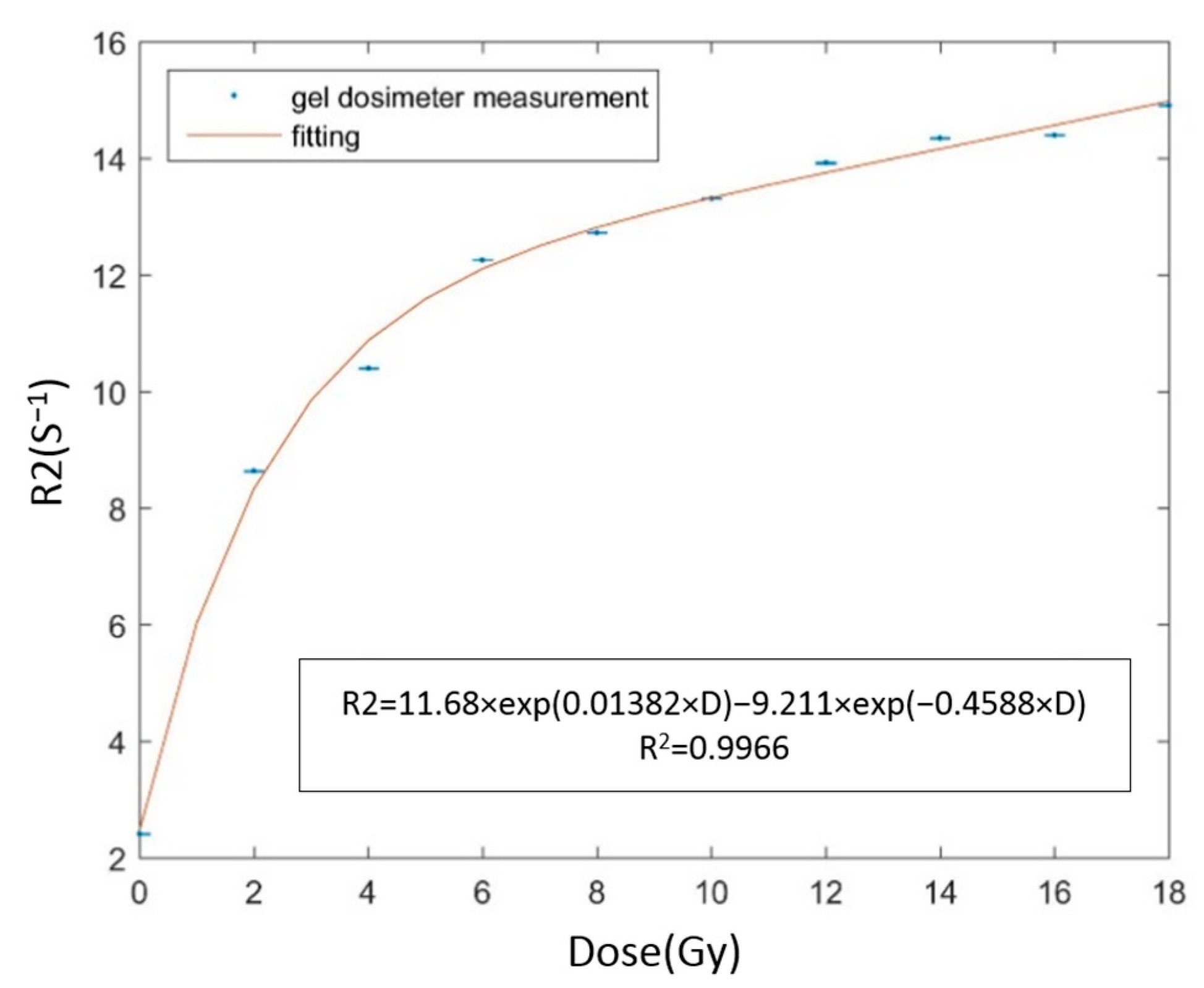
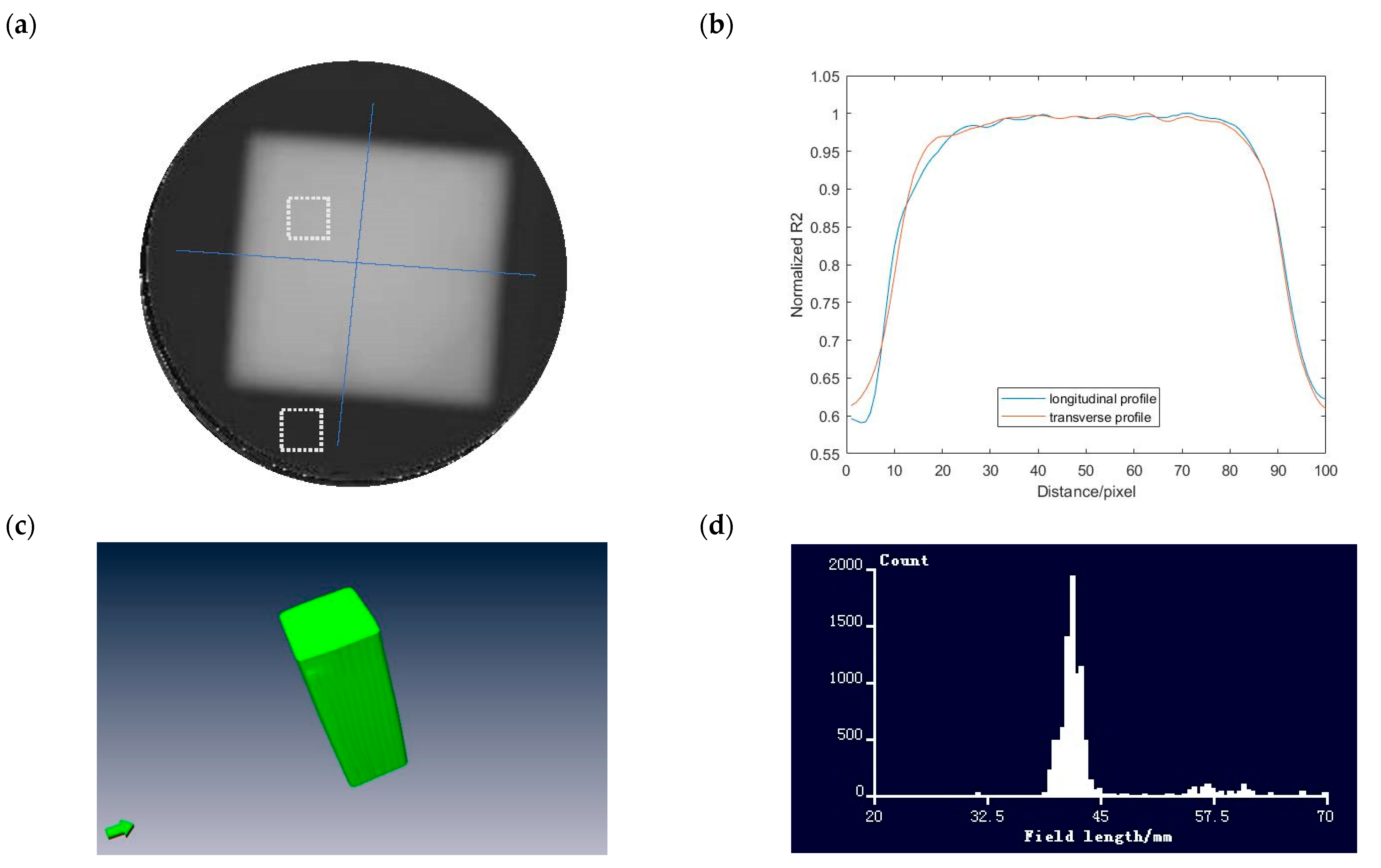

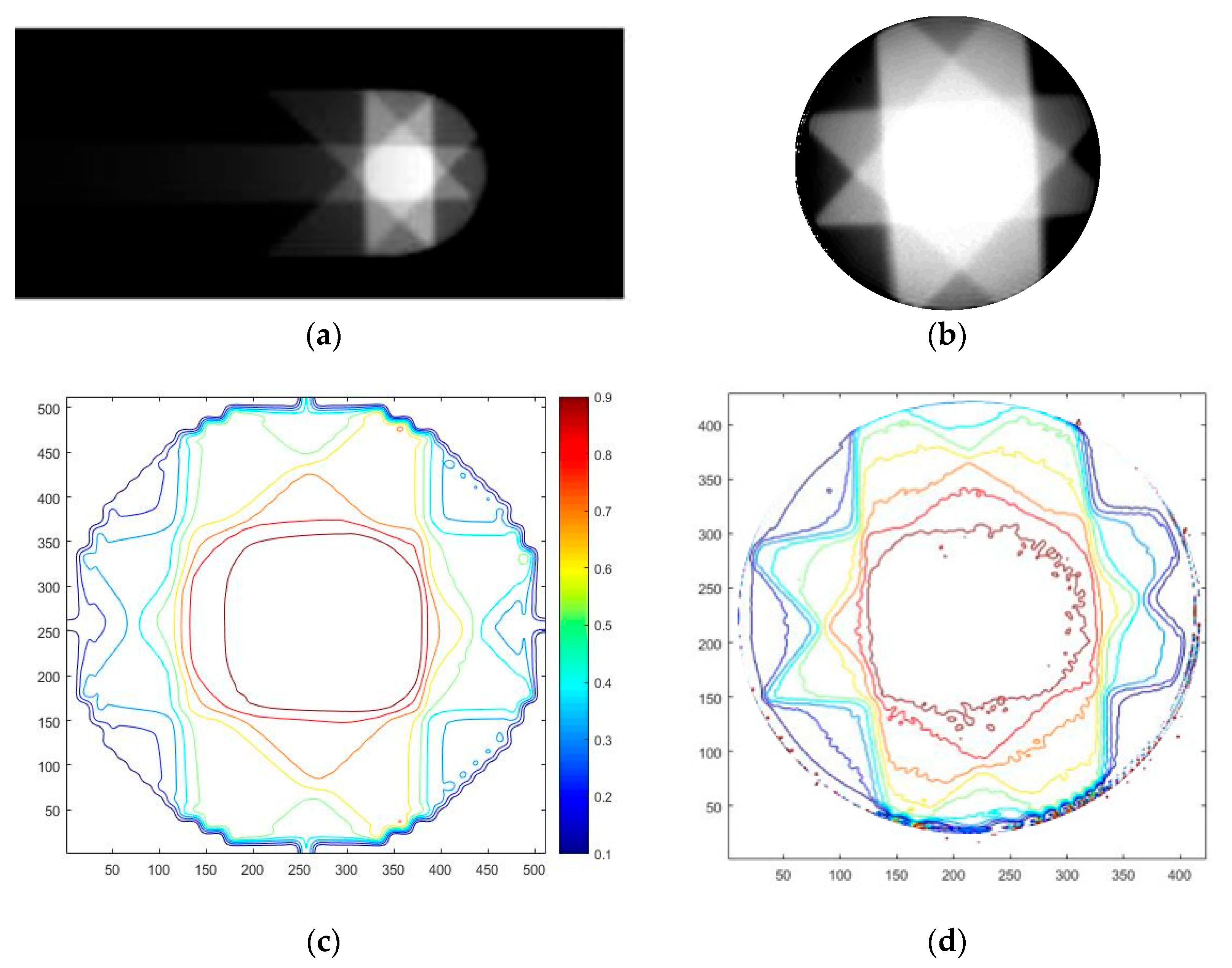

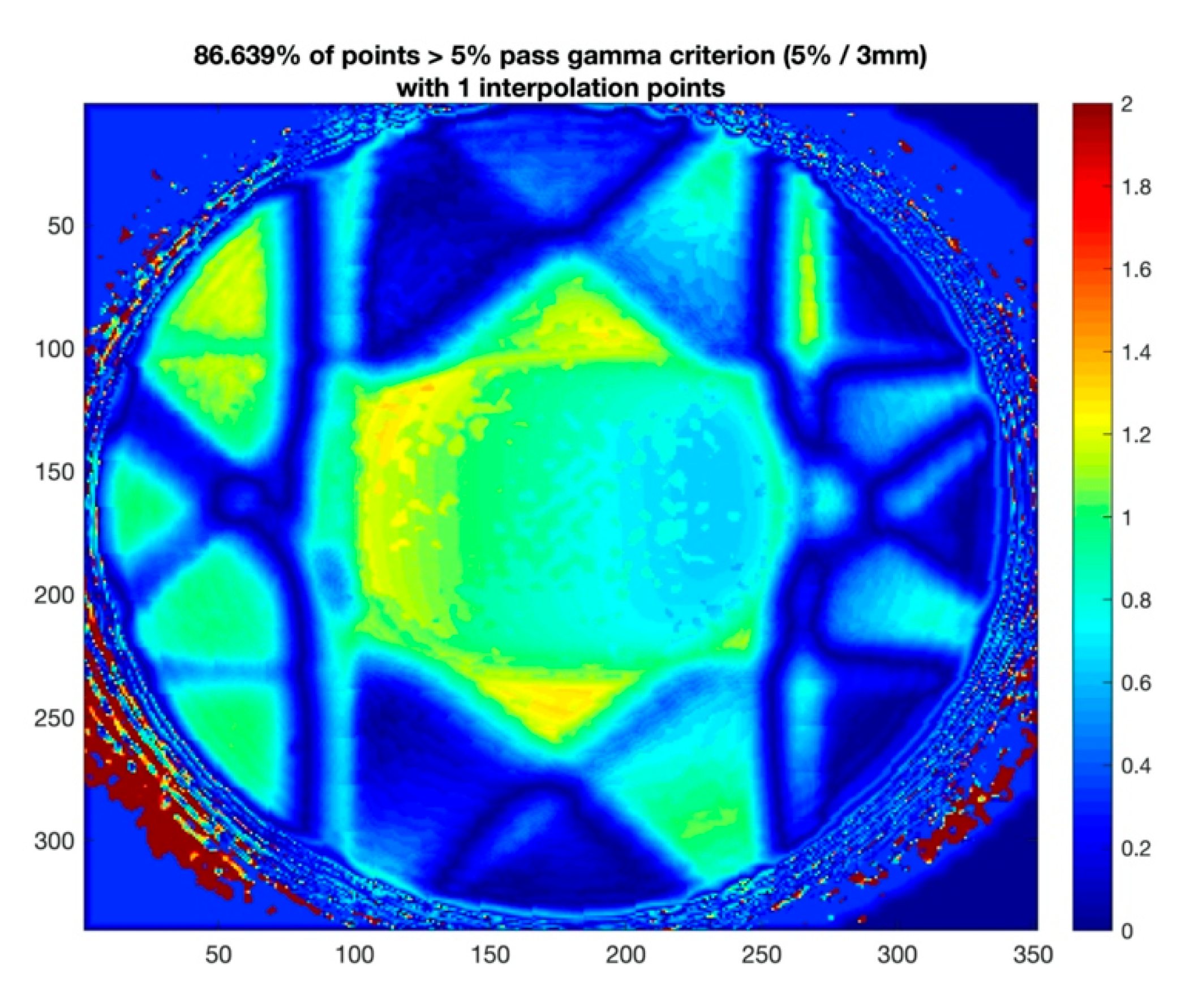

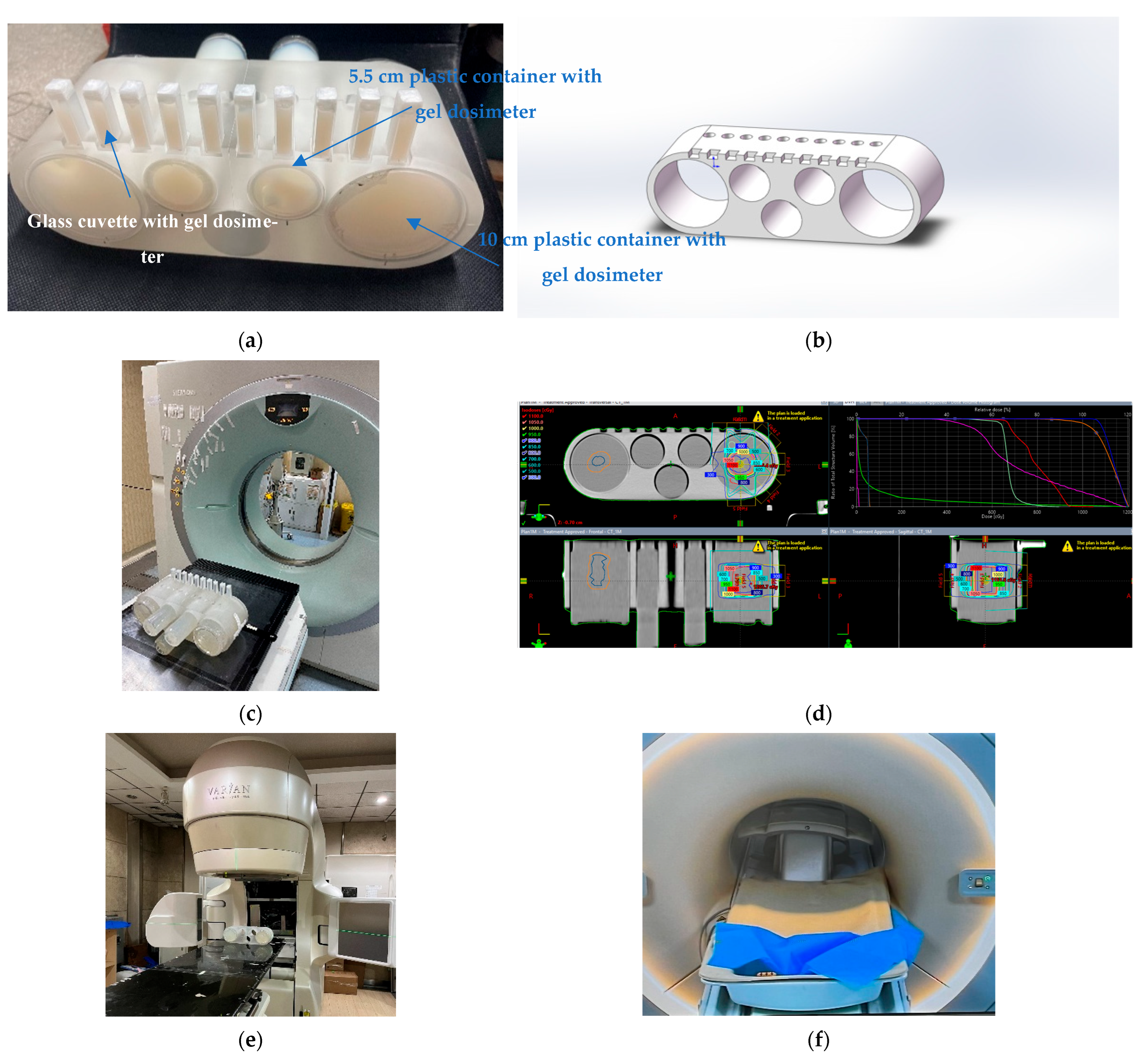
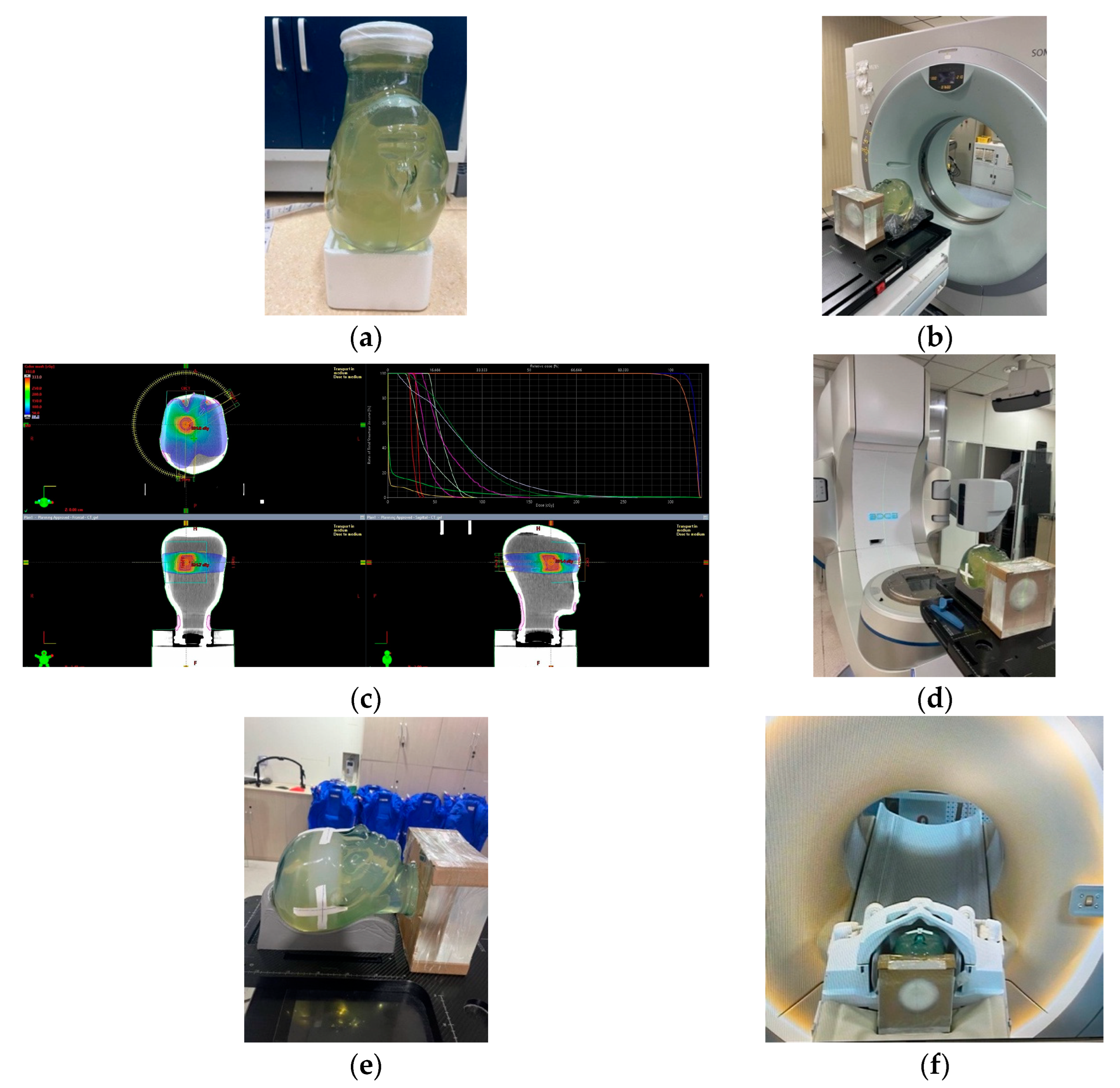
| Component | MAGAT-f |
|---|---|
| Distilled water | 83% |
| Gelatin (Type A, 300 Bloom) | 8% |
| Methacrylic acid 99.5% | 6% |
| Formaldehyde solution with 37% minimum and stabilized with 10% methanol | 3% |
| Tetrakis(hydroxymethyl) phosphonium Chloride (THPC) 80% | 10 mM |
| Parameter | Units | Value |
|---|---|---|
| Echo spacing | ms | 22.5 |
| Maximum echo time (TE) | ms | 360 |
| Repetition time (TR) | ms | 3000 |
| Field of view (FOV) | mm | 180 |
| Matrix size (MS) | pixels | 512 × 512 |
| Slice thickness | mm | 3 |
| Number of excitations (NEX) | 1 |
Disclaimer/Publisher’s Note: The statements, opinions and data contained in all publications are solely those of the individual author(s) and contributor(s) and not of MDPI and/or the editor(s). MDPI and/or the editor(s) disclaim responsibility for any injury to people or property resulting from any ideas, methods, instructions or products referred to in the content. |
© 2023 by the authors. Licensee MDPI, Basel, Switzerland. This article is an open access article distributed under the terms and conditions of the Creative Commons Attribution (CC BY) license (https://creativecommons.org/licenses/by/4.0/).
Share and Cite
Zhu, L.; Du, Y.; Peng, Y.; Xiang, X.; Wang, X. End-to-End QA with Polymer Gel Dosimeter for Photon Beam Radiation Therapy. Gels 2023, 9, 212. https://doi.org/10.3390/gels9030212
Zhu L, Du Y, Peng Y, Xiang X, Wang X. End-to-End QA with Polymer Gel Dosimeter for Photon Beam Radiation Therapy. Gels. 2023; 9(3):212. https://doi.org/10.3390/gels9030212
Chicago/Turabian StyleZhu, Libing, Yi Du, Yahui Peng, Xincheng Xiang, and Xiangang Wang. 2023. "End-to-End QA with Polymer Gel Dosimeter for Photon Beam Radiation Therapy" Gels 9, no. 3: 212. https://doi.org/10.3390/gels9030212





